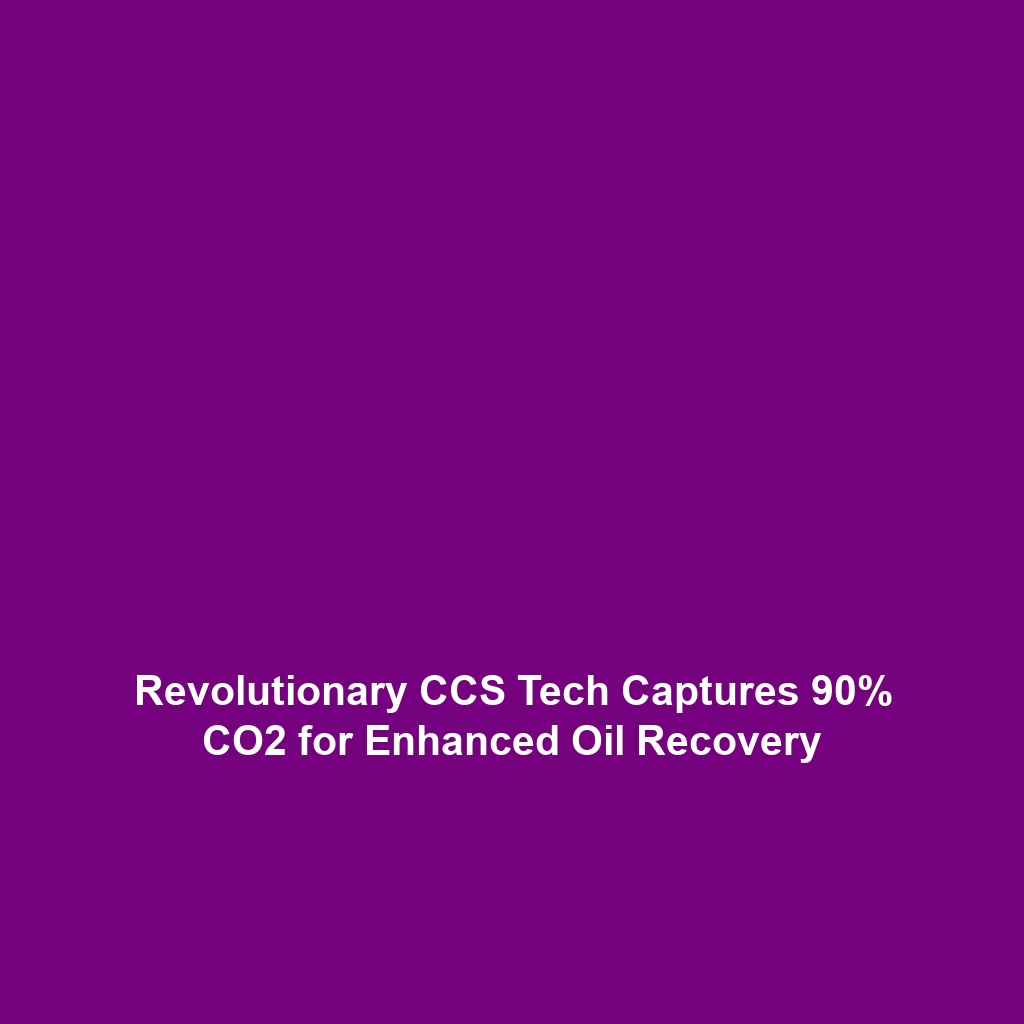Capturing 90% of CO2 Emissions for Enhanced Oil Recovery: A Significant Step in Carbon Capture & Storage (CCS)
In the fight against climate change, innovative technologies that effectively reduce carbon emissions are crucial. One such technology captures up to 90% of CO2 emissions generated from industrial plants, subsequently utilizing the captured CO2 for enhanced oil recovery (EOR). This process not only aids in reducing the plant’s carbon footprint but also aligns with the broader goals of Carbon Capture & Storage (CCS) initiatives. Understanding this technology’s implications is essential to pave the way for a sustainable future.
Key Concepts of CO2 Capture and Enhanced Oil Recovery
To fully appreciate the significance of capturing CO2 from industrial emissions for EOR, it is important to understand several key concepts:
- Carbon Capture & Storage (CCS): A set of technologies designed to prevent carbon dioxide from entering the atmosphere by capturing it at its source.
- Enhanced Oil Recovery (EOR): A method of increasing oil extraction through the injection of substances, including captured CO2, into oil reservoirs.
- Carbon Footprint Reduction: The process of decreasing the total emissions of carbon dioxide associated with energy production and consumption.
This technology fits seamlessly into the CCS landscape, offering a dual benefit of emissions reduction and resource recovery.
Applications and Real-World Uses
Several industries have begun to adopt this innovative technology that captures CO2 emissions and uses it for EOR. Notable applications include:
- Petroleum Industry: Many oil companies are implementing CO2 EOR techniques to increase oil yield while simultaneously reducing emissions from their operations.
- Power Generation: Power plants are incorporating CCS technologies that enable them to capture a significant portion of CO2 emissions, facilitating a transition to cleaner energy sources.
- Cement Manufacturing: Industries in cement production are exploring CCS as a means to mitigate their high CO2 emissions while improving their operational efficiency.
These applications highlight how capturing CO2 can serve dual purposes in both reducing environmental harm and enhancing resource extraction.
Current Challenges in CO2 Capture and EOR
While the benefits of this technology are evident, several challenges persist:
- High Implementation Costs: The technology for capturing CO2 and utilizing it for EOR can require substantial initial investment.
- Infrastructure Requirements: Existing infrastructure may need adjustments or overhauls to integrate CCS and EOR technologies.
- Regulatory Hurdles: Variability in regulations and policies can impact the feasibility of implementing CCS projects.
- Public Perception: There may be public resistance or misconceptions about the safety and effectiveness of CO2 capture and storage.
Future Research and Innovations
As awareness of climate issues grows, research into CO2 capture technologies continues to advance. Future innovations may include:
- Next-Gen Capture Technologies: Development of more efficient and cost-effective capture materials that can improve the overall process.
- Integration with Renewable Energy: Investigations into how CCS can complement renewable energy systems to lower emissions.
- Enhanced Monitoring Systems: Advanced monitoring technologies to ensure the safety and integrity of underground storage.
These breakthroughs may transform how industries approach the challenge of carbon emissions and contribute significantly to CCS goals.
Conclusion
Utilizing technologies that capture up to 90% of CO2 emissions and apply them for enhanced oil recovery plays a critical role in the overarching objective of reducing the carbon footprint. As the world increasingly embraces Carbon Capture & Storage (CCS) technologies, ongoing research, development, and public awareness will be vital. For those seeking further information, resources on CCS technologies and best practices can be found on our CCS Innovations page.

Leave a Reply